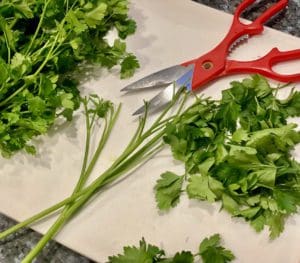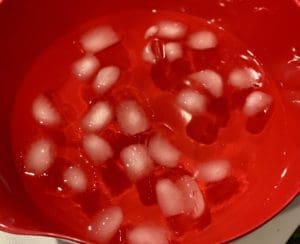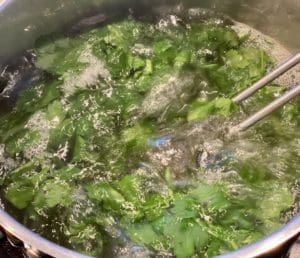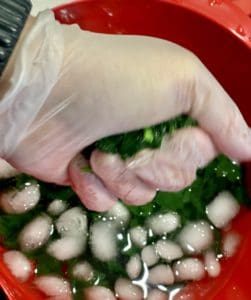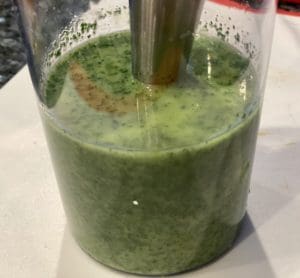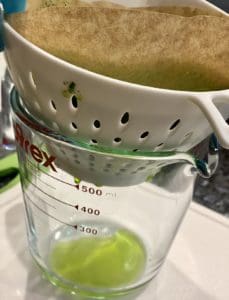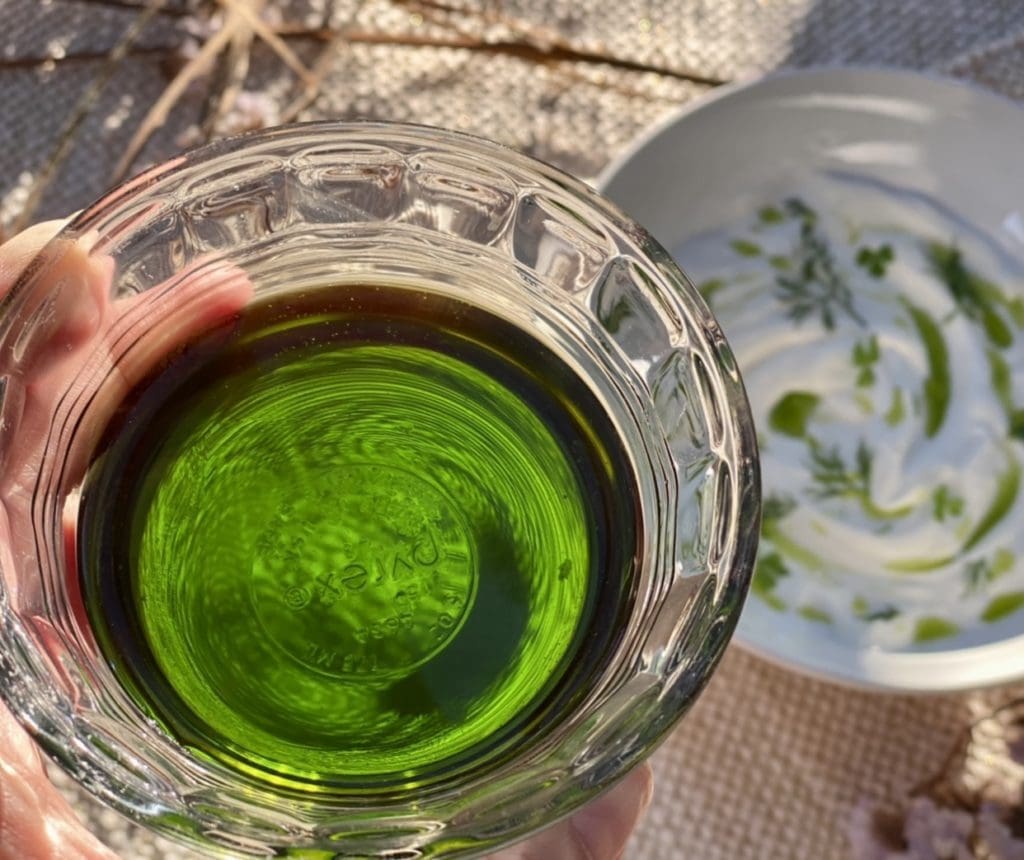
This vibrant green Parsley oil will brighten any dish and make you look like a qualified chef. It’s truly stunning and eye-catching
Get green with envy!
Awaken the MasterChef inside you with this dazzling vibrant green Parsley Oil.
I caught an episode of MasterChef and witnessed the beauty of green herb oil, but of course, I did not know what it was. One contestant was garnishing his consommé with drops of bright green liquid. It turned his pretty dish into something extraordinary, and I couldn’t take my eyes away from it.
As much as I’m a lazy cook, I’m also a curious and adventurous cook. This Parsley Herb Oil was something I needed to accomplish, and I’m happy to report I have! The good news is that it’s not that complicated to do, but the downside is it’s quite messy. However, keep in mind you’ll have this stunning green oil to garnish your food for 2 months! So within that two months, host as many dinner parties as you can and use it on every single dish.

I recently made a batch of Parsley Oil to garnish my Turkish Eggs (Cilbir), and oh boy, did it look spectacular. Beautiful art on a plate, and it was almost too pretty to eat. The green actually looked more bright and more incredible in real life. I felt so proud of making this dish because it looked like it came from a professional chef.
What I love about Parsley Oil is it doesn’t really have a strong taste when used as a garnish. It’s quite subtle, so it won’t change the overall flavour of a dish, especially if it’s a delicate dish.
Turn your leftover herbs into bright green oil!
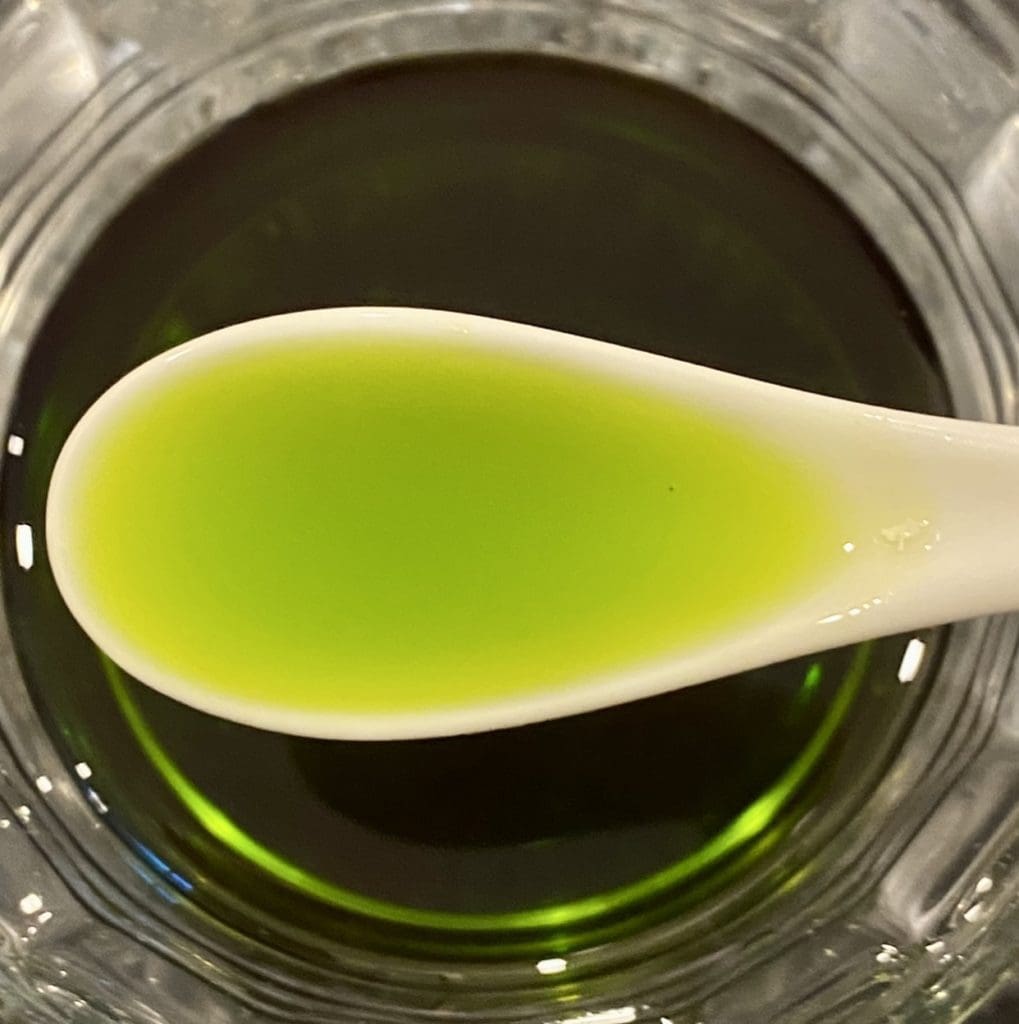
You don’t have to just use parsley to create beautiful green oil for garnish. If you don’t mind your oil having some flavour, then you could look at using spring onions (scallions, green onions), coriander (cilantro), dill, chives and basil. Basically, any herbs that have soft green leaves will make lovely herb oil. This is a great way to use up leftover herbs!
The entire process of making parsley oil was actually quite therapeutic for me. I love the last step where we place the mixture through a coffee filter and watch small drops of beautiful clear green oil fall into the jug. It’s almost like I created a science experiment at home, just like my high school days when we sat on those big lab tables with tripods and beakers!
I started this batch in the late afternoon, but I only stuck around to see the first few drops hit the glass. Tomi, Kai and I were at our local mall in search of a quick dinner. My sister, Nara, got home from the gym and I texted her, ‘Don’t knock down my green science experiment that’s sitting on the kitchen bench!’
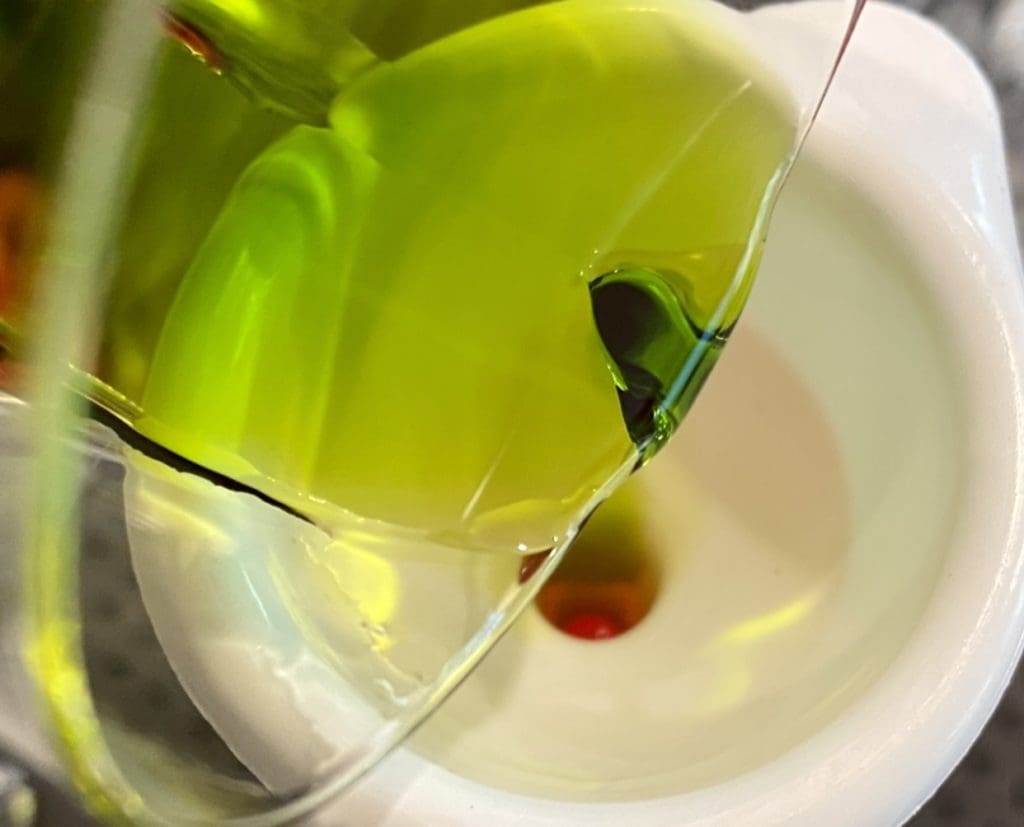
Nara text me back, ‘Ok, but what the hell is that?’
‘My magical juice. It gives me the ability to fly!‘ She replied to me with several emojis with the one rolling the eyes. ‘Hey, do me a favour and can you send me a pic of it?’
Yes, I asked my sister to send me a picture of the oil dripping down into the jug because I couldn’t stop thinking about it whilst we were having dinner. This batch was slow to filter through the coffee paper, so I had to leave it overnight. The results were still breathtaking though!
Once I have captured the last drop of parsley oil, I pour it into a sauce container and store it in the fridge for up to 2 months. Doing it this way is convenient because I can just squeeze out what I need or place drops to garnish my dishes and make them stunning!
Ingredients for Parsley Oil
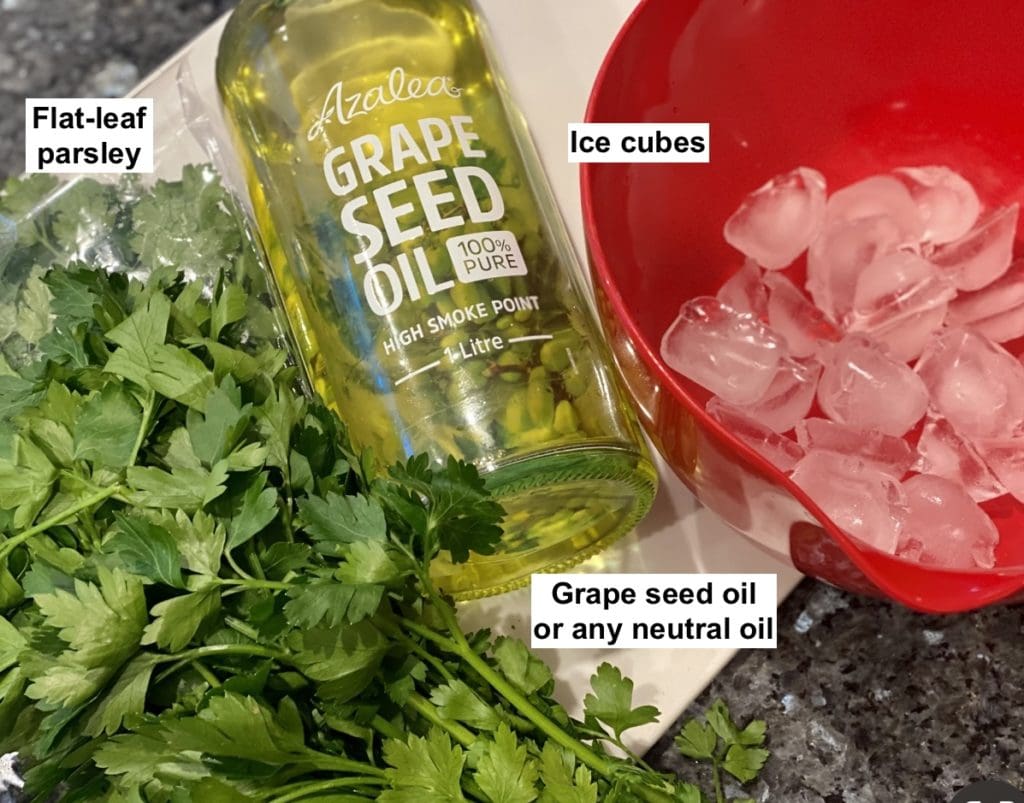
Parsley – I like my green herb oil to be mild and neutral in taste, so I can use it to garnish several dishes without worrying about it overwhelming the flavours of the dish. To achieve this, I used flat-leaf parsley, which is the mildest tasting herb. If you don’t mind adding flavour to your dishes, then most herbs with soft green leaves would work such as basil, coriander (cilantro), chives, and spring onion (green onions, scallions). You could even mix the herbs up for equal amounts called for in this recipe.
Grape seed oil is quite expensive compared to other kinds of oil and may be difficult to find. I used grape seed oil because it’s neutral in taste and it has that natural lovely yellow/green colour which will help bring out the vibrant colour of the Parsley Oil. In saying that, other neutral oils would also work, such as canola, vegetable or bran oil.

For the latest recipes, join our FREE 3CatsFoodie mailing list
How to make Parsley Oil!
Step-by-step guide with photos
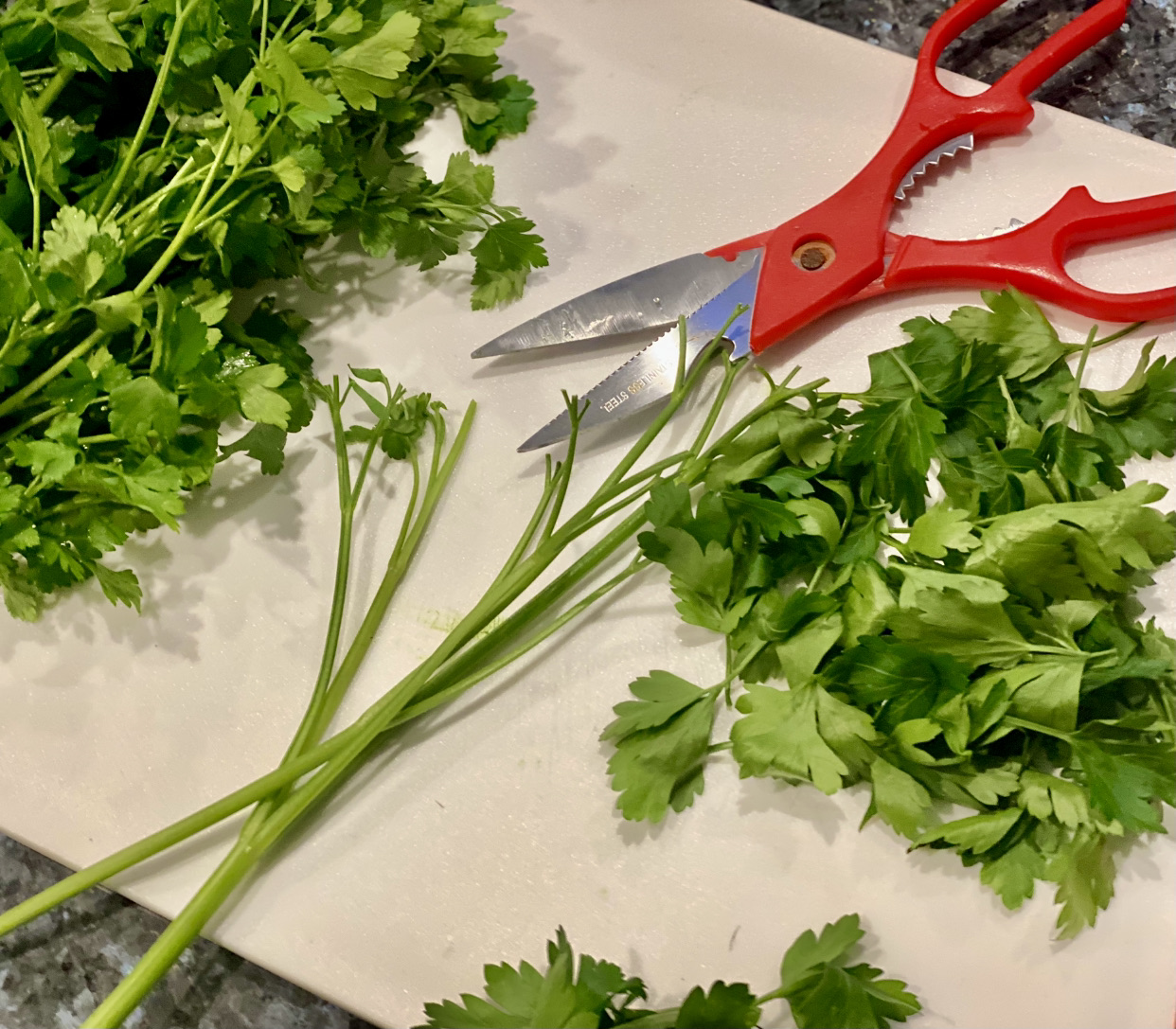
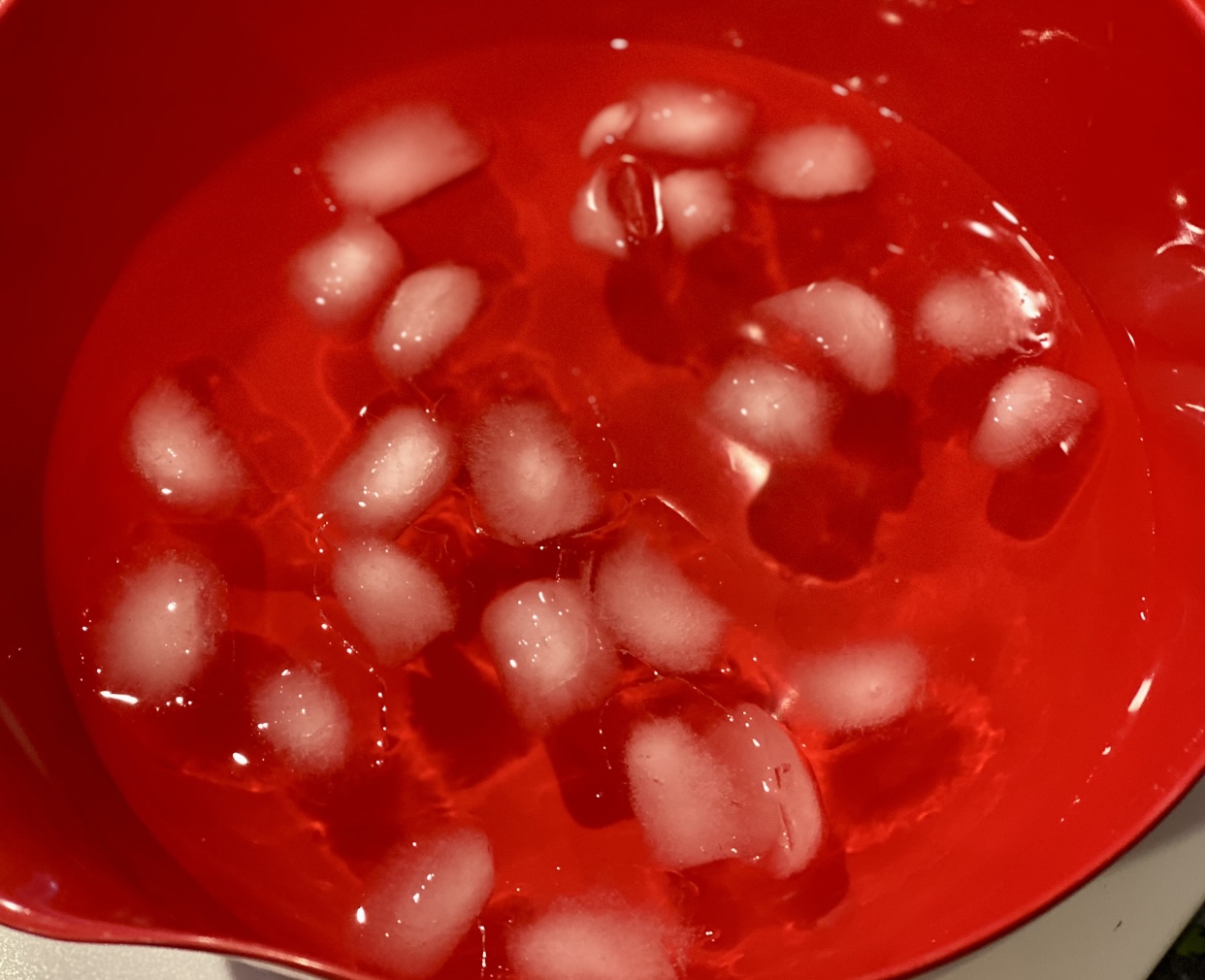
Fill a medium saucepan 2/3 full with water and place it over high heat and bring it to a boil.
Whilst waiting for the water to boil, separate the parsley leaves from the stems using kitchen scissors. Try to get rid of as much stem as you can because you won’t get much colour from them. However, a bit of stem is okay, but discard the remaining or keep them to flavour soup or stock.
Prepare an ice bath by filling a large bowl of water with ice cubes.
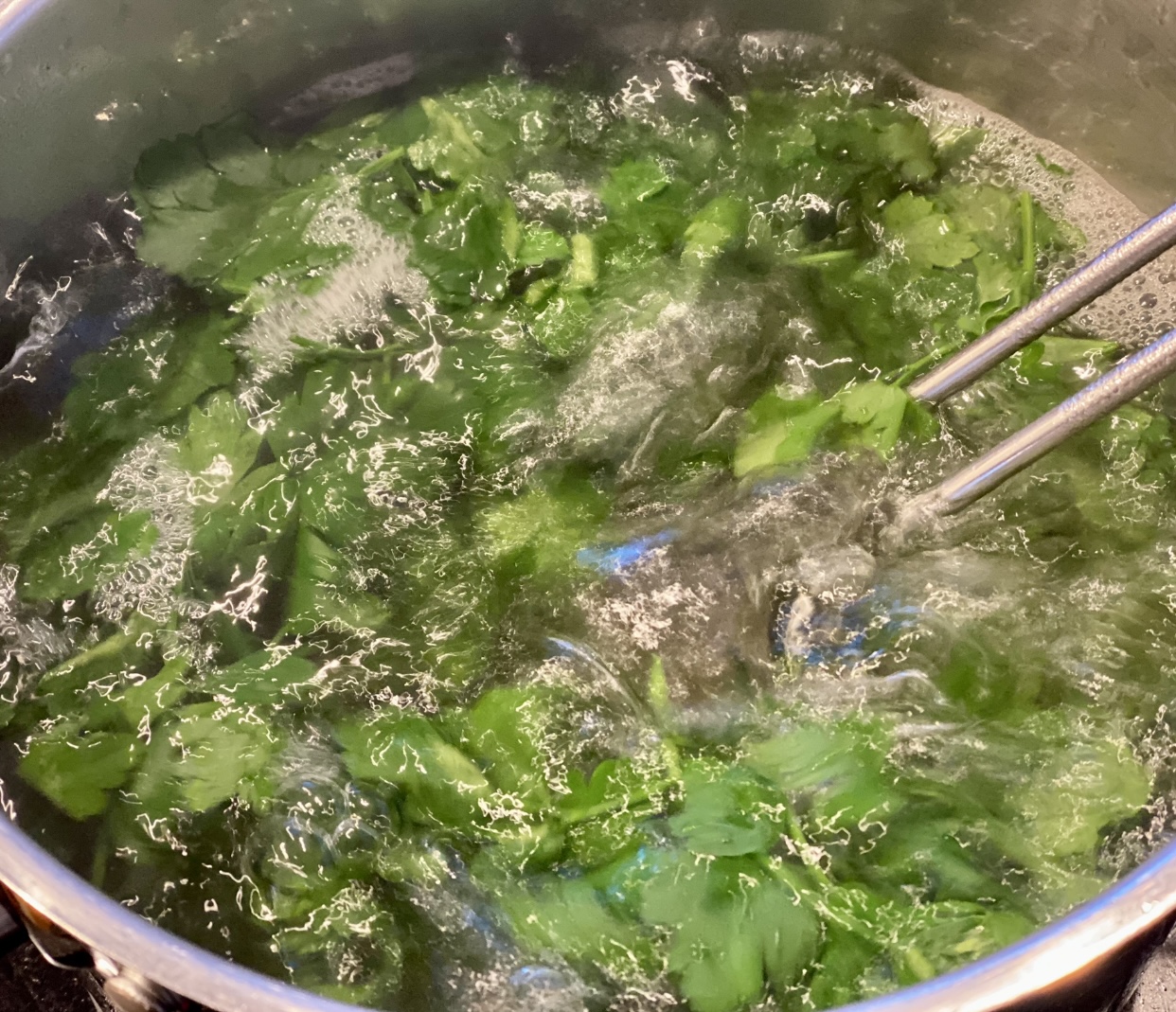

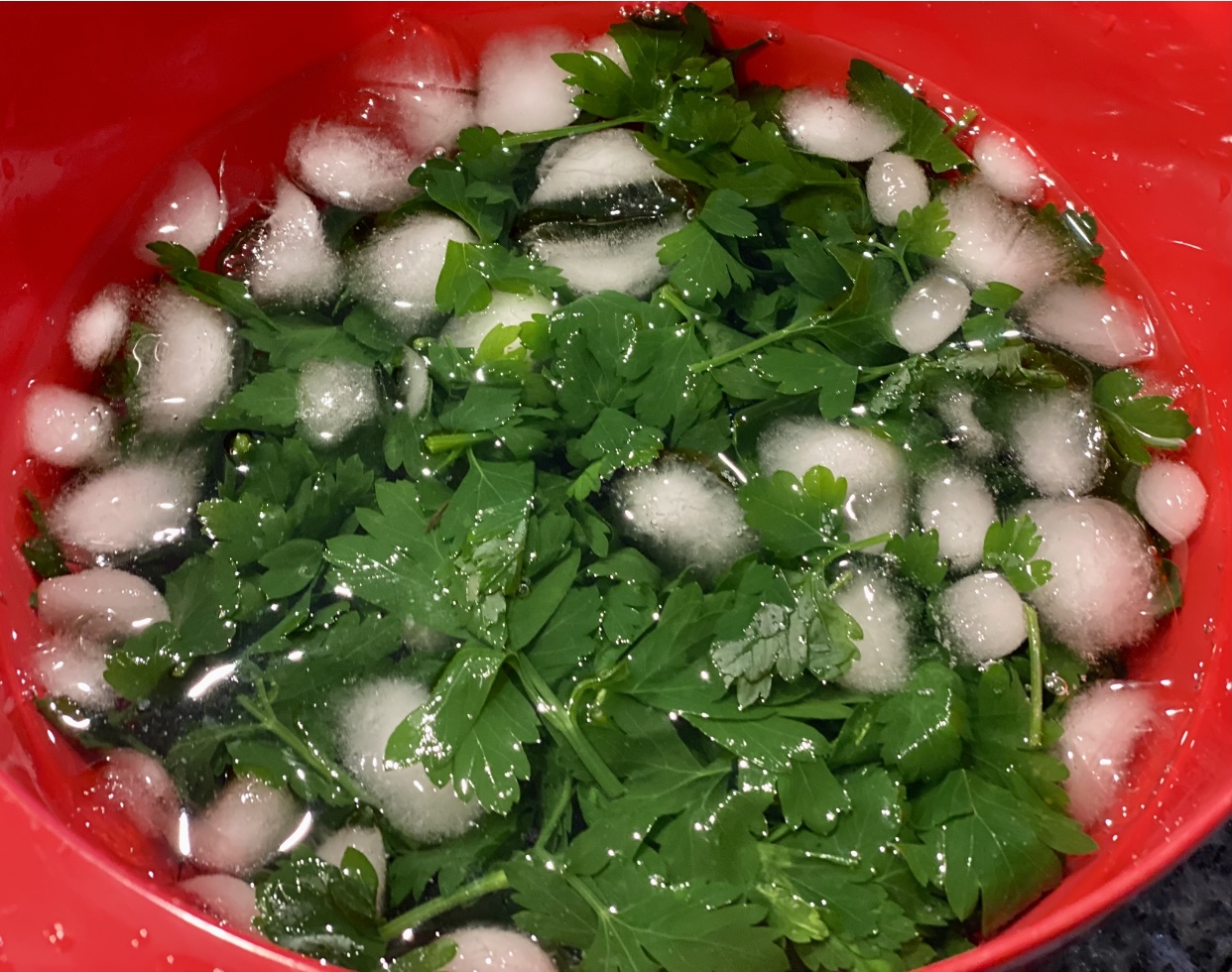
Once the water has boiled, place the parsley leaves in and blanch them for 20 seconds, then remove them with a strainer or slotted spoon. Immediately transfer the parsley into the ice water and leave for a minute.
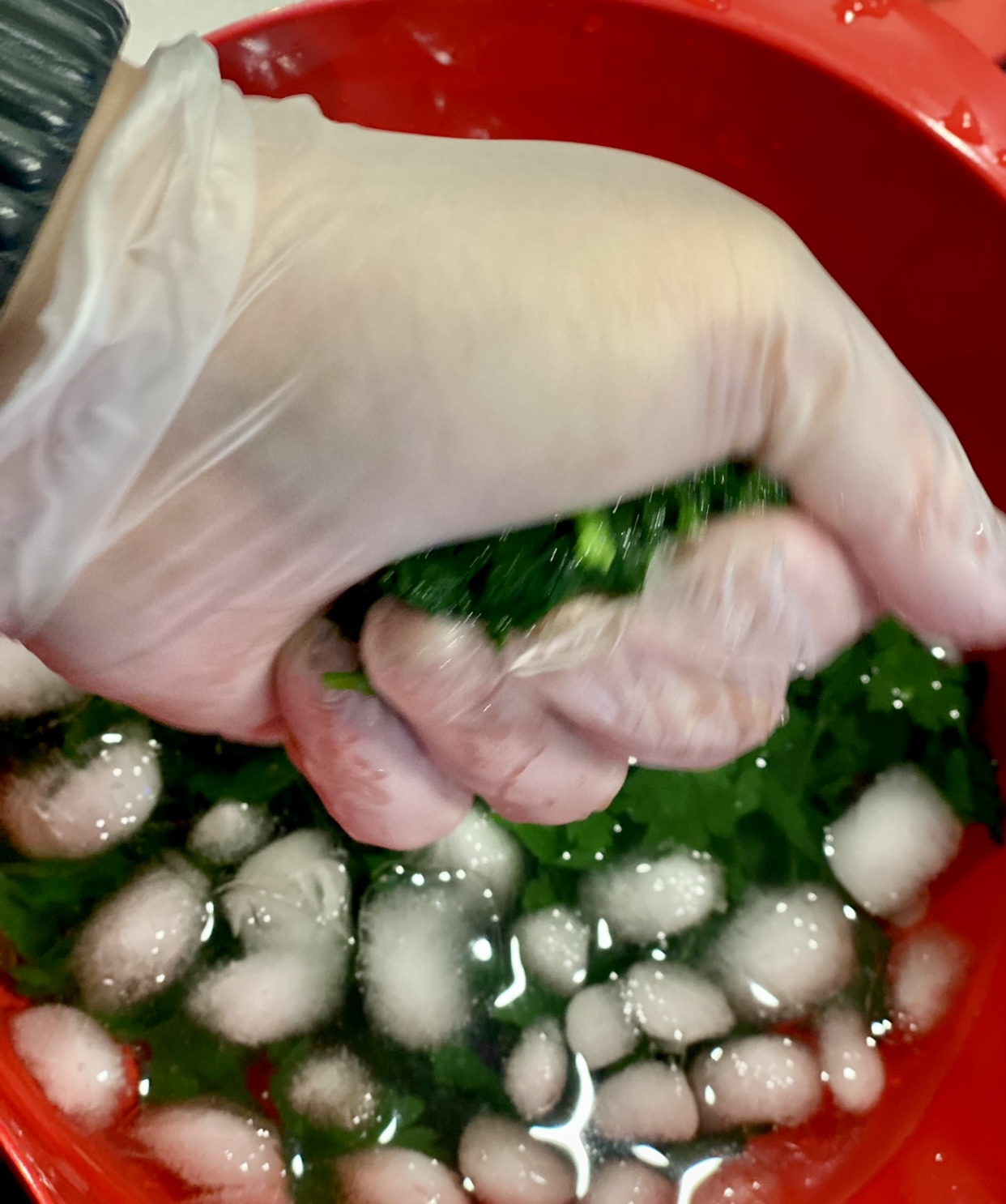
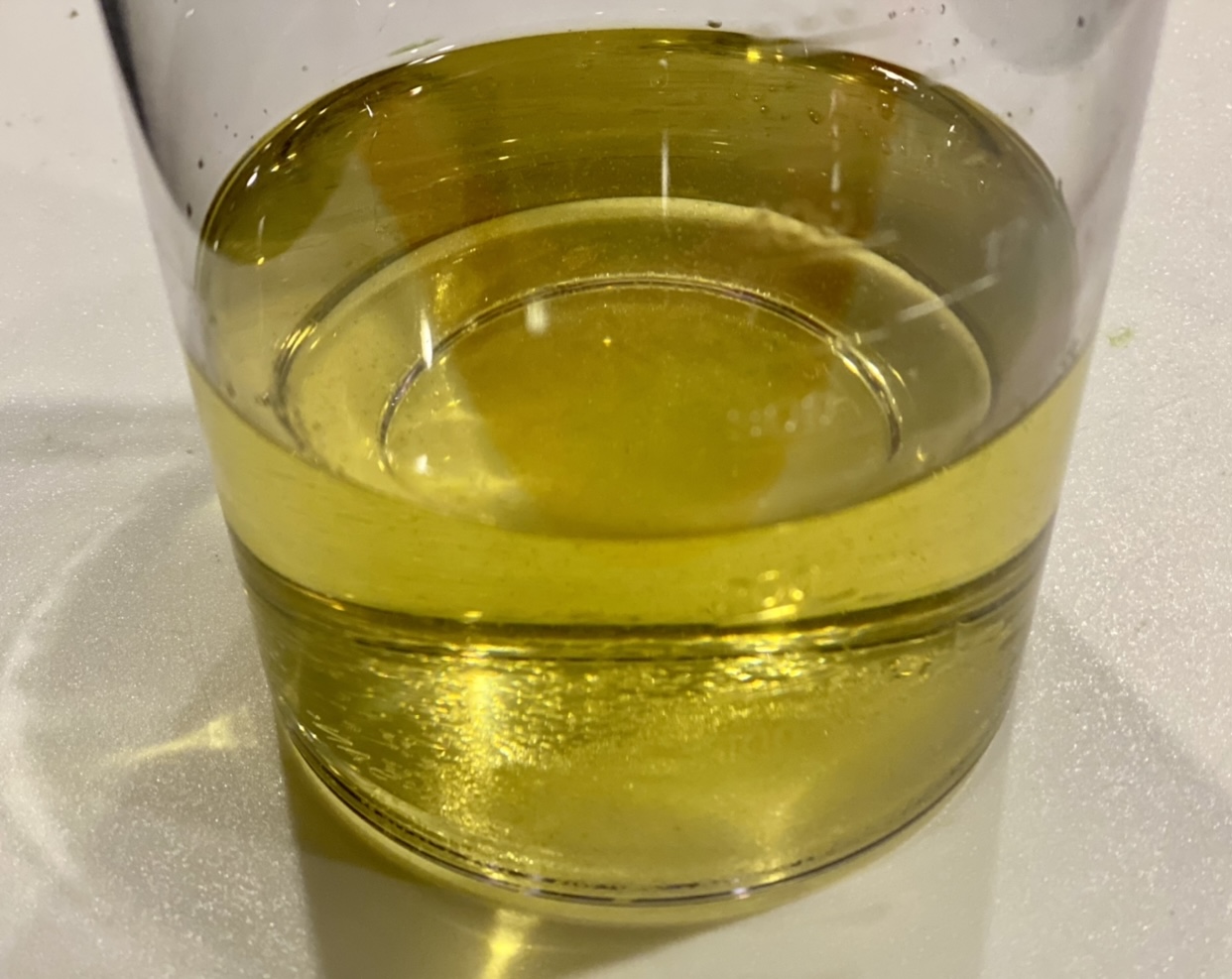
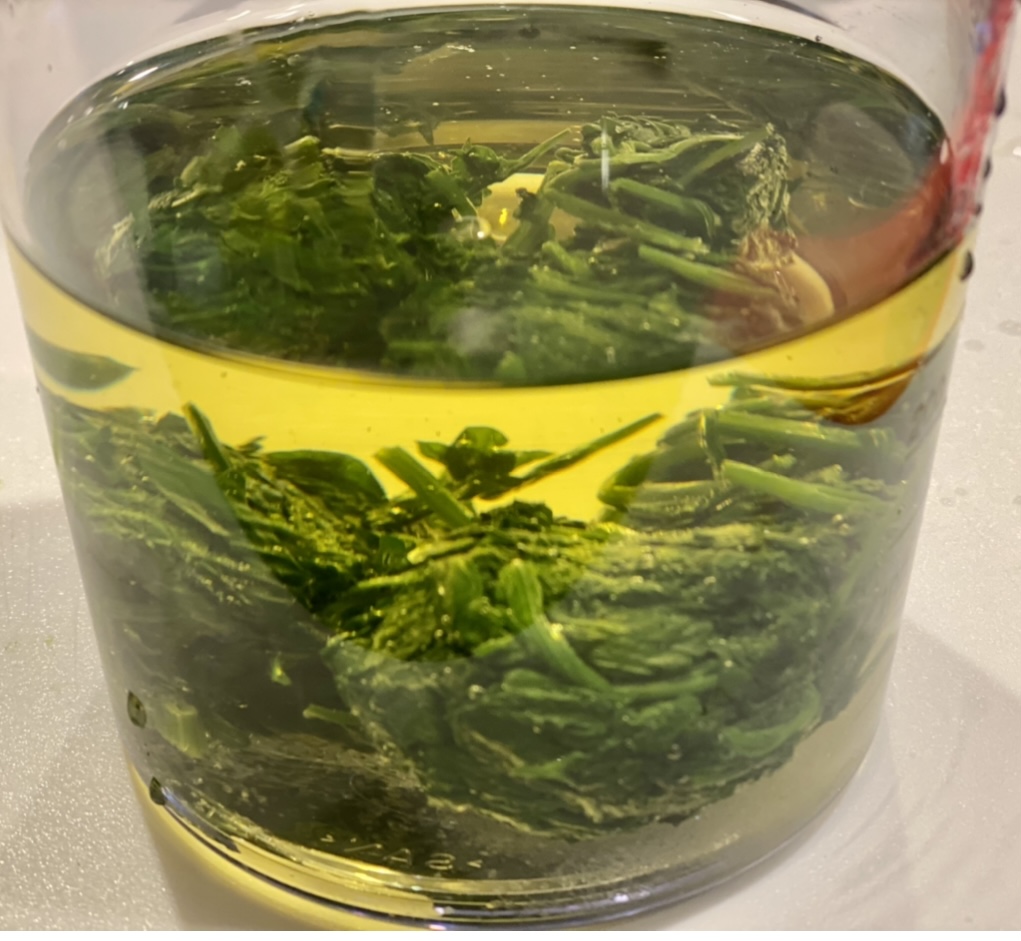
Squeeze and remove much water as you can out from the parsley. You can do this by transferring the parsley into a clean tea towel and then squeezing out the water.
Place the oil and salt into a powerful blender or hand blender cup, then add the parsley. I prefer to use a hand-held blender because it chops the herbs to a very fine consistency, which may be hard to achieve with a regular blender.

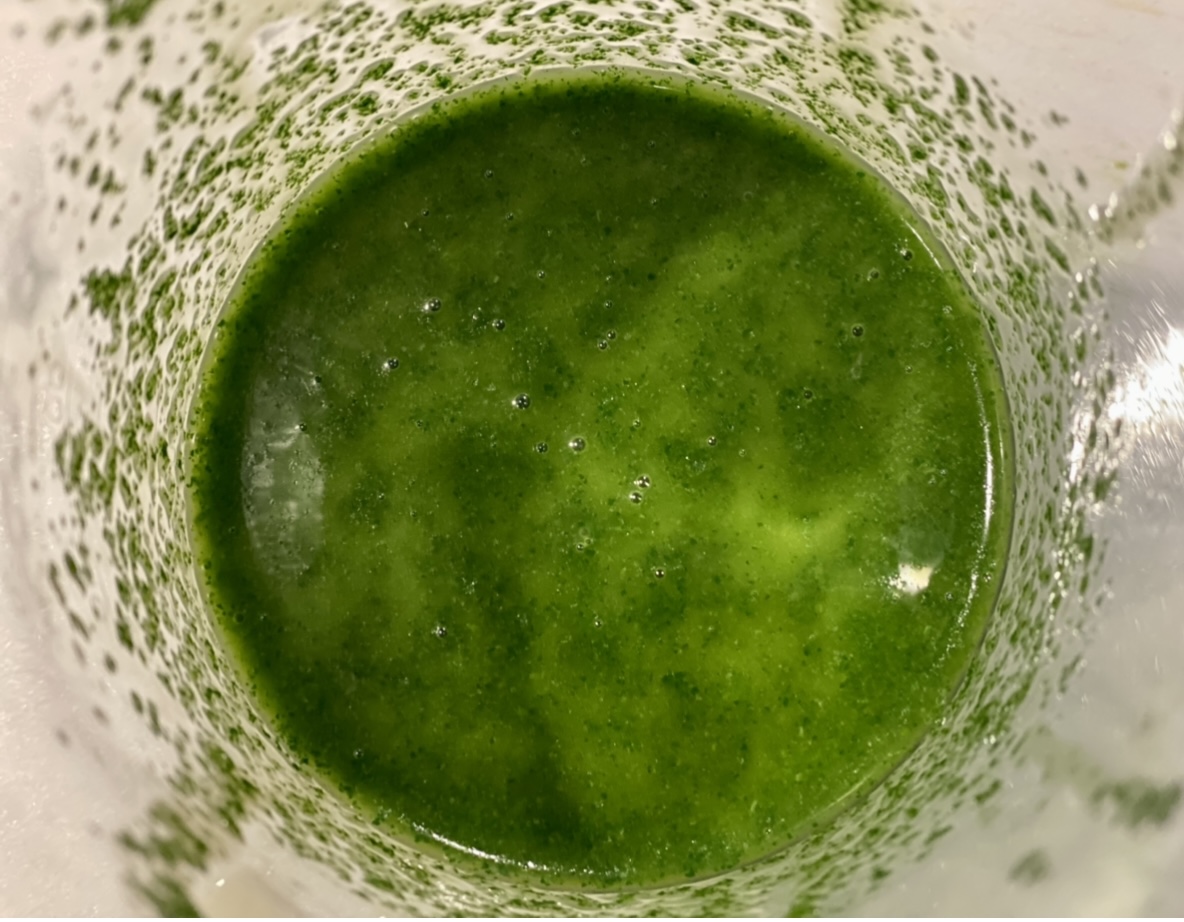


Blitz the mixture at high speed until the parsley leaves are very fine. They should look like tiny specks.
Place a strainer over a bowl and pour the parsley mixture over the strainer, then use a paper towel to remove the bits stuck on the strainer. Repeat this 2 to 3 times by using another bowl to catch the strained mixture. Doing this will help filter the oil faster through the filter later.

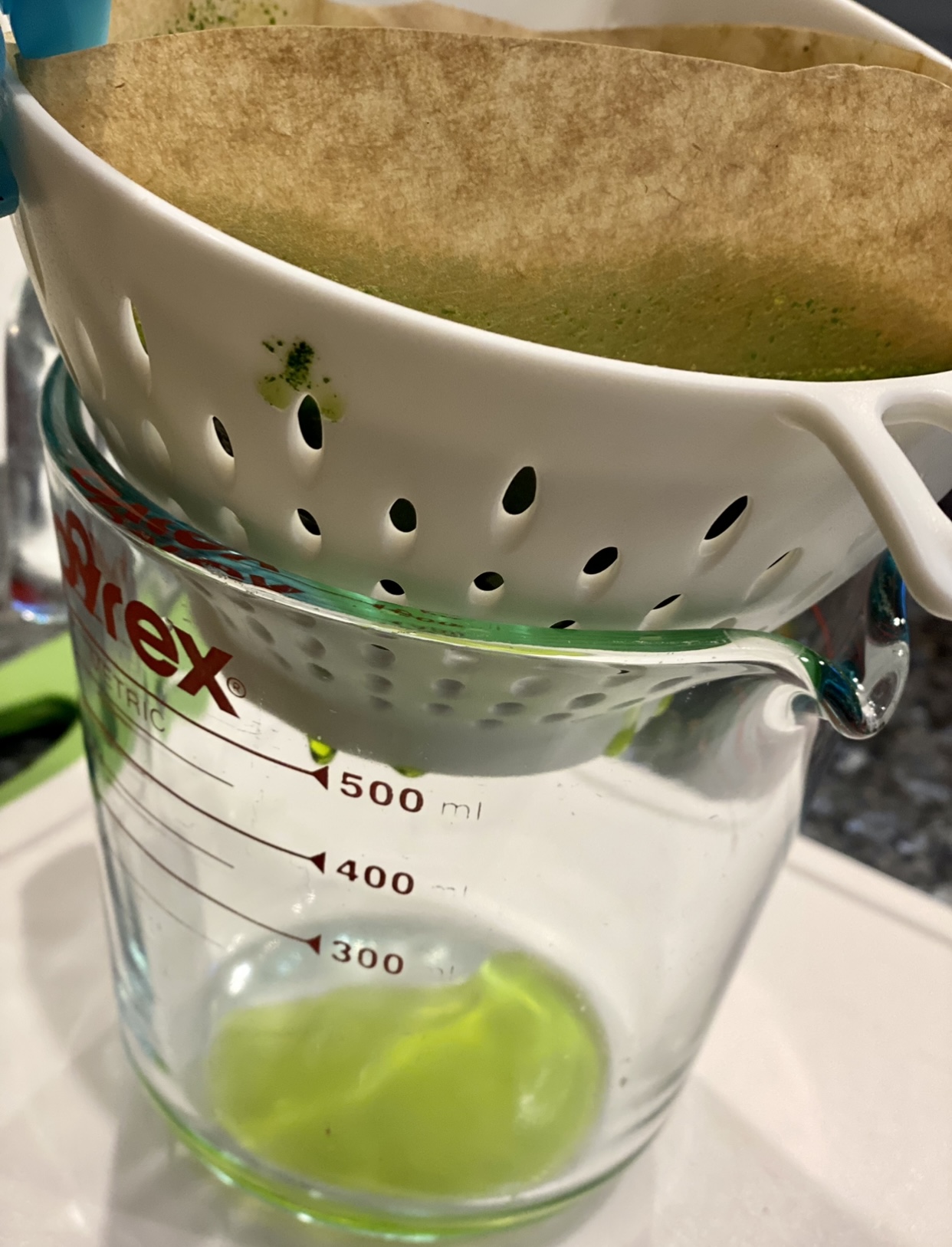
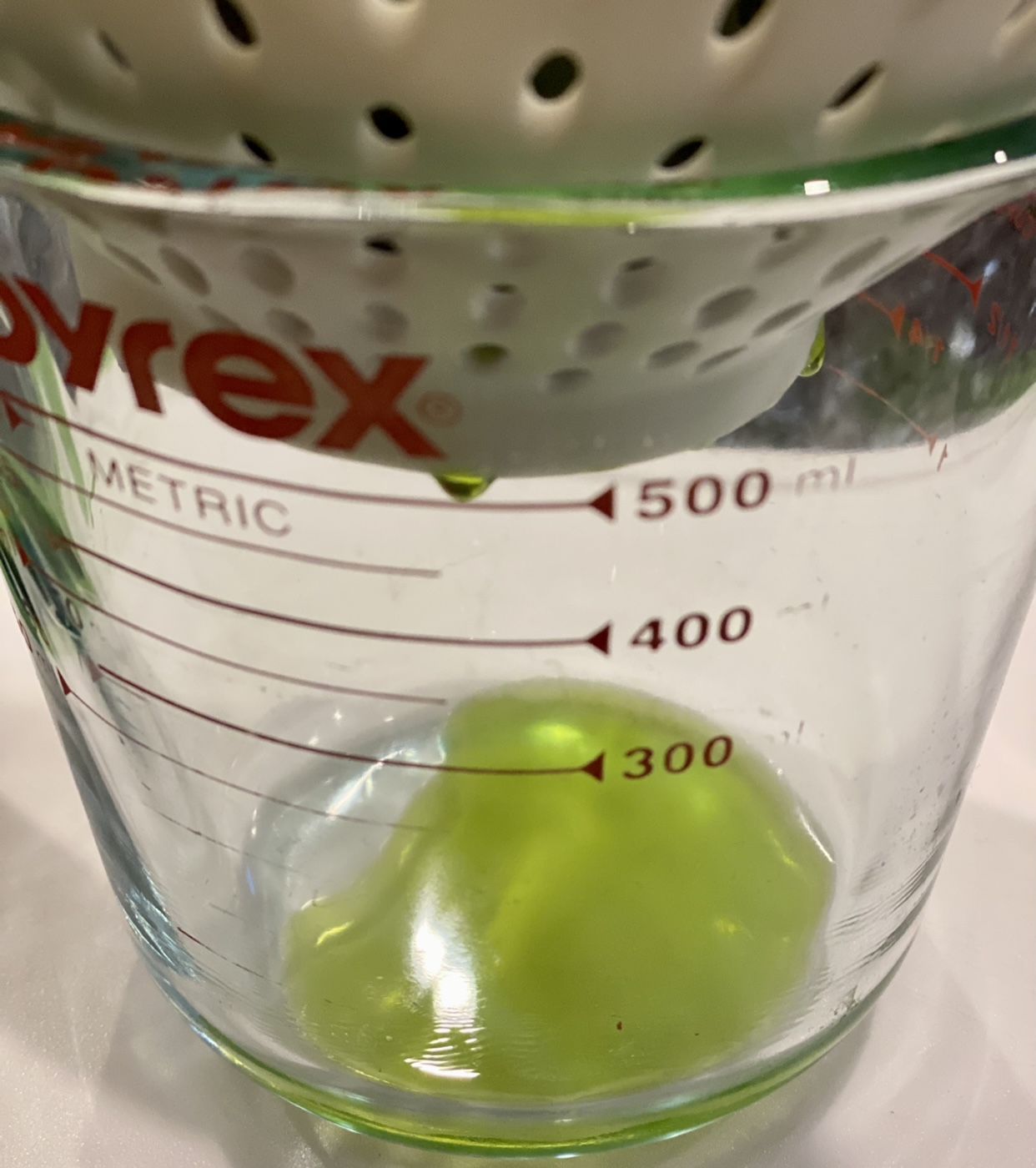
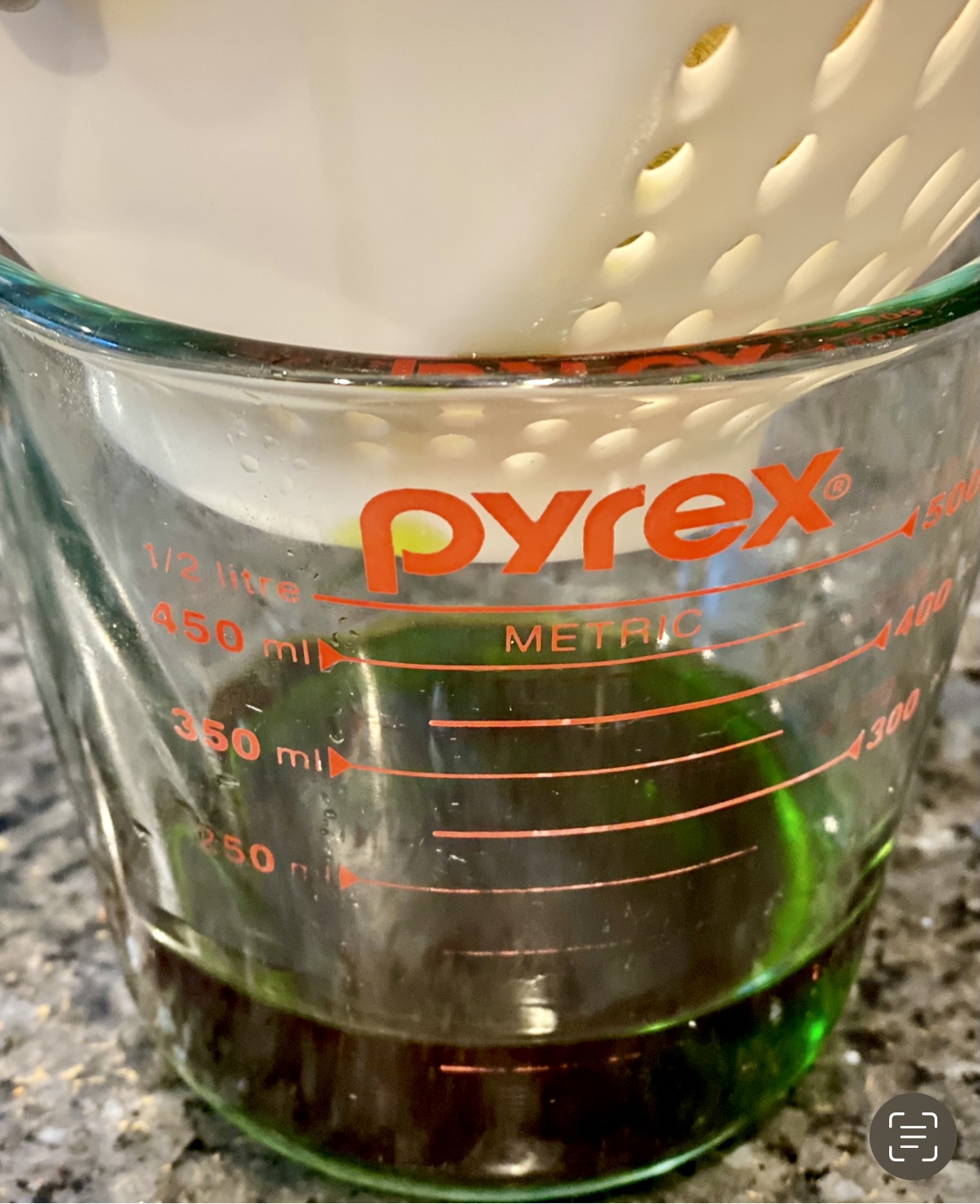

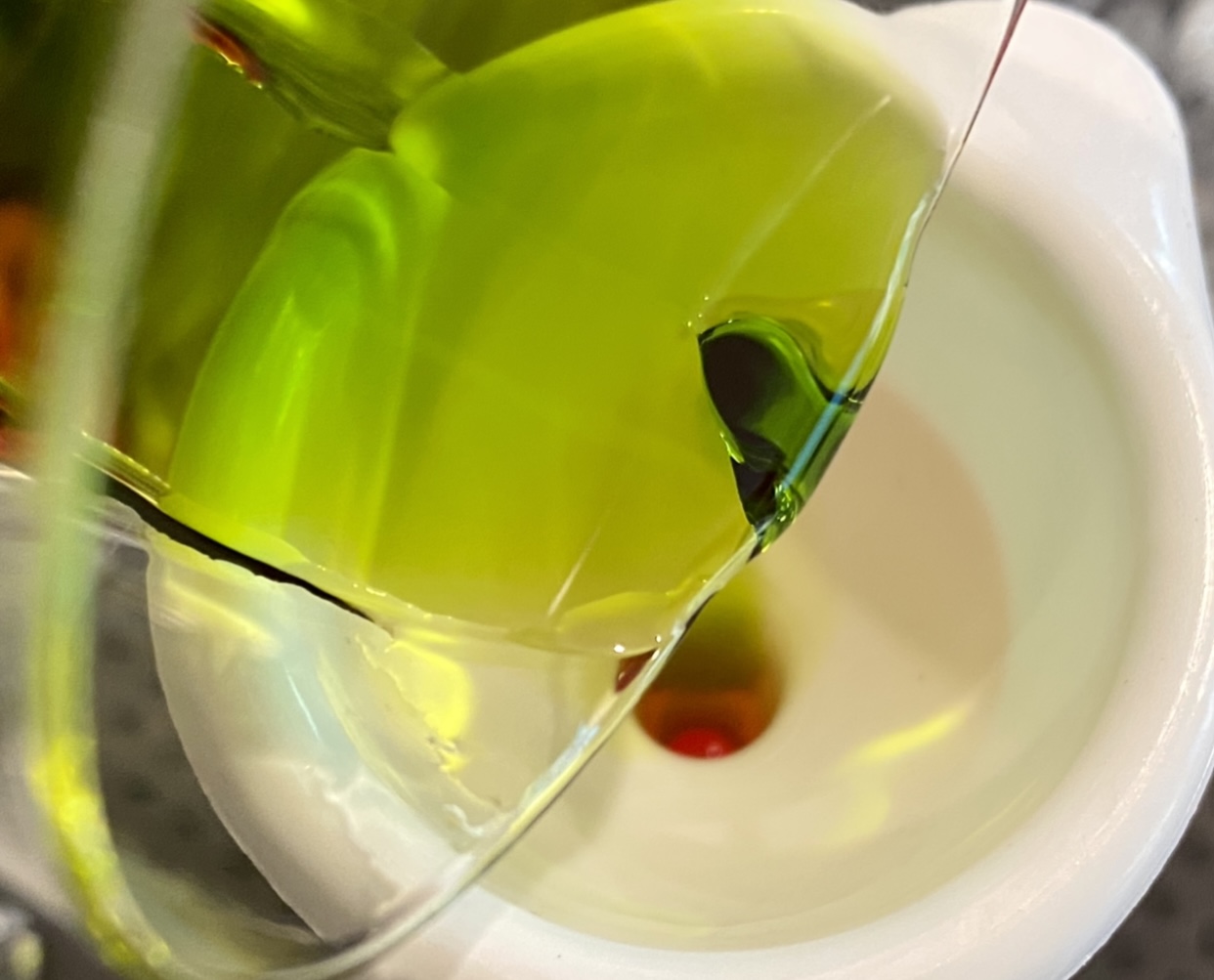
Set up a bowl or jug with a strainer over the top, but make sure it’s steady, so it doesn’t topple over. Place a fine cheesecloth or coffee filter in the strainer. I used pegs to secure the filter to the strainer. Pour the oil into the filter (you may need to do this in two lots) and let the clean parley oil filter through to the bottom into the jug. This is a slow process and may take anywhere from a few hours to overnight, depending on how fine the parsley leaves are. Don’t force the oil out by pushing the mixture through because you may end up with leaves in the clean oil. What you want is vibrant green oil with no solids in it!
Storage – Transfer the parsley oil into a clean jar and cover. Store the jar in the fridge for up to 2 months. The parsley oil’s vibrant colour may fade a little, but it’ll still look pretty when used to garnish dishes.
A Third-Party Application calculated the calories and nutritional information. Please use this as an approximate guide only.
Cooking measurements are in Australian standard spoon and cup measurements.
I would love to hear your thoughts or feedback on this post. If you have made this recipe, please show your support by commenting and rating this recipe. You can do this by scrolling down or by clicking the green circle on the left. To prevent spam on this site, an email address is required but it won’t be published.
Cheers (I’ll drink to that) – Cat Tre

Parsley Oil
Ingredients
- 4 cup parsley leaves (approx. 2 bunches) (NOTE 1)
- 1 cup ice cubes
- 1 cup grapeseed oil (or any neutral oil) (NOTE 2)
- ¼ tsp salt
Instructions
- Fill a medium saucepan 2/3 full with water and place it over high heat and bring it to a boil. Whilst waiting for the water to boil, separate the parsley leaves from the stems using kitchen scissors. Try to get rid of as much stem as you can because you won't get much colour from them. However, a bit of stem is okay but discard the remaining or keep them to flavour soup or stock.

- Prepare an ice bath by filling a large bowl of water with ice cubes.

- Once the water has boiled, place the parsley leaves in and blanch them for 20 seconds, then remove them with a strainer or slotted spoon. Immediately transfer the parsley into the ice water and leave for a minute.

- Squeeze and remove much water as you can out from the parsley. You can do this by transferring the parsley into a clean tea towel and then squeezing out the water.

- Place the oil and salt into a powerful blender or hand blender cup, then add the parsley. I prefer to use a hand-held blender because it chops the herbs to a very fine consistency, which may be hard to achieve with a regular blender. Blitz the mixture at high speed until the parsley leaves are very fine. They should look like tiny specks.

- Place a strainer over a bowl and pour the parsley mixture over the strainer, then use a paper towel to remove the bits stuck on the strainer. Repeat this 2 to 3 times by using another bowl to catch the strained mixture. Doing this will help filter the oil faster through the filter later.

- Set up a bowl or jug with a strainer over the top, but make sure it's steady, so it doesn't topple over. Place a fine cheesecloth or coffee filter in the strainer. I used pegs to secure the filter to the strainer. Pour the oil into the filter (you may need to do this in two lots) and let the clean parley oil filter through to the bottom into the jug. This is a slow process and may take anywhere from a few hours to overnight, depending on how fine the parsley leaves are. Don't force the oil out by pushing the mixture through because you may end up with leaves in the clean oil. What you want is vibrant green oil with no solids in it!


